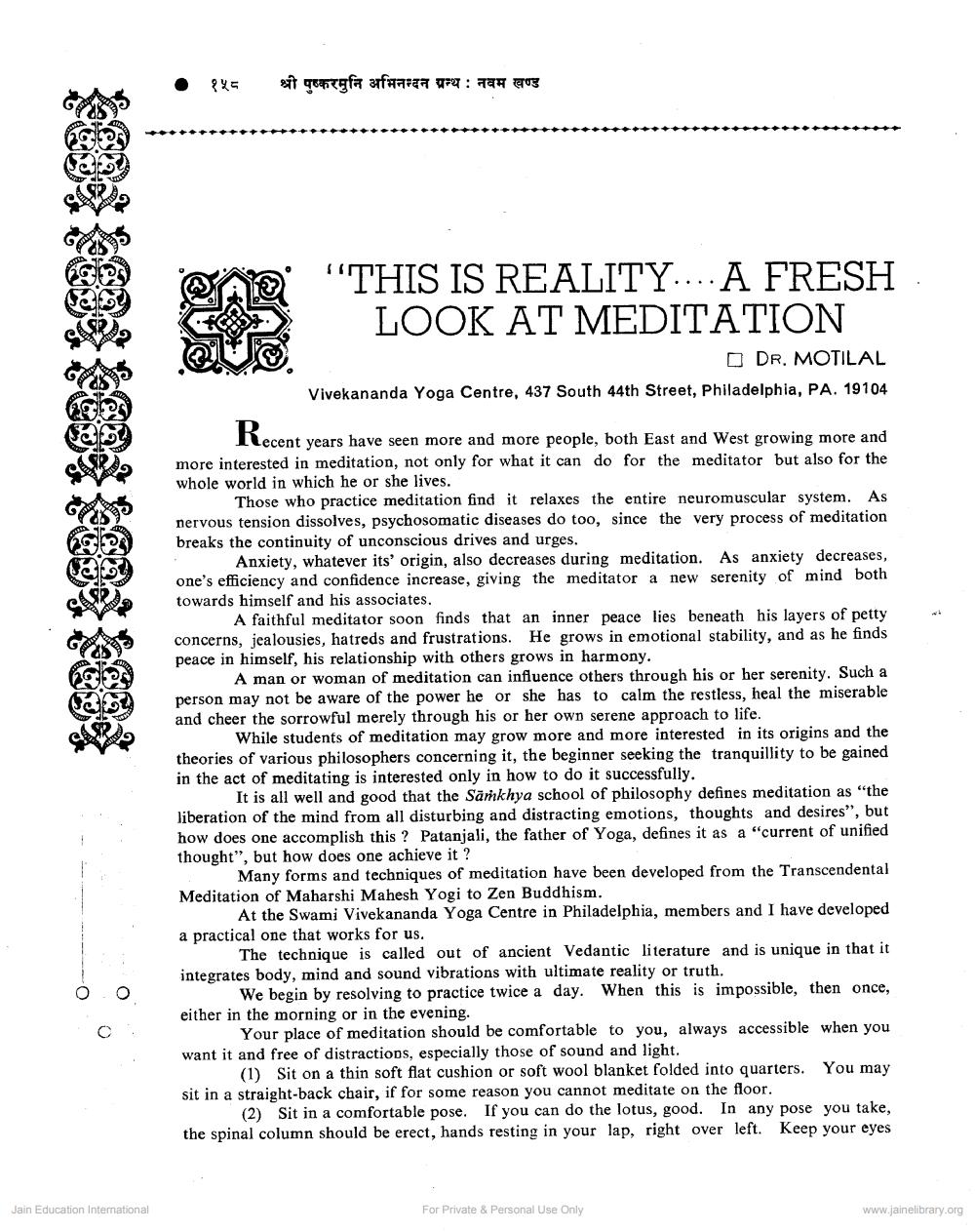________________
१५८
श्री पुष्करमुनि अभिनन्दन ग्रन्थ : नवम खण्ड
"THIS IS REALITY.... A FRESH LOOK AT MEDITATION
DR. MOTILAL
Vivekananda Yoga Centre, 437 South 44th Street, Philadelphia, PA, 19104
Necent years have seen more and more people, both East and West growing more and more interested in meditation, not only for what it can do for the meditator but also for the whole world in which he or she lives.
Those who practice meditation find it relaxes the entire neuromuscular system. As nervous tension dissolves, psychosomatic diseases do too, since the very process of meditation breaks the continuity of unconscious drives and urges.
Anxiety, whatever its' origin, also decreases during meditation. As anxiety decreases, one's efficiency and confidence increase, giving the meditator a new serenity of mind both towards himself and his associates.
A faithful meditator soon finds that an inner peace lies beneath his layers of petty concerns, jealousies, hatreds and frustrations. He grows in emotional stability, and as he finds peace in himself, his relationship with others grows in harmony.
A man or woman of meditation can influence others through his or her serenity. Such a person may not be aware of the power he or she has to calm the restless, heal the miserable and cheer the sorrowful merely through his or her own serene approach to life.
While students of meditation may grow more and more interested in its origins and the theories of various philosophers concerning it, the beginner seeking the tranquillity to be gained in the act of meditating is interested only in how to do it successfully.
It is all well and good that the Samkhya school of philosophy defines meditation as "the liberation of the mind from all disturbing and distracting emotions, thoughts and desires", but how does one accomplish this ? Patanjali, the father of Yoga, defines it as a "current of unified thought", but how does one achieve it?
Many forms and techniques of meditation have been developed from the Transcendental Meditation of Maharshi Mahesh Yogi to Zen Buddhism.
At the Swami Vivekananda Yoga Centre in Philadelphia, members and I have developed a practical one that works for us.
The technique is called out of ancient Vedantic literature and is unique in that it integrates body, mind and sound vibrations with ultimate reality or truth
We begin by resolving to practice twice a day. When this is impossible, then once, either in the morning or in the evening.
Your place of meditation should be comfortable to you, always accessible when you want it and free of distractions, especially those of sound and light.
(1) Sit on a thin soft flat cushion or soft wool blanket folded into quarters. You may sit in a straight-back chair, if for some reason you cannot meditate on the floor.
(2) Sit in a comfortable pose. If you can do the lotus, good. In any pose you take, the spinal column should be erect, hands resting in your lap, right over left. Keep your eyes
Jain Education International
For Private & Personal Use Only
www.jainelibrary.org




